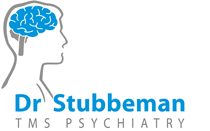
Electrical brain stimulation enhances creativity: study
Media Contact:Deccan Herald | ads@deccanherald.co.in | 080-25880 000 | April 16, 2016
Copyright © 2016 Deccan Herald
Safe levels of electrical stimulation can enhance your capacity to think more creatively, according to a new study.
Researchers from the Georgetown University Medical Centre (GUMC) in US used Transcranial Direct Current Stimulation (tDCS) to stimulate an area of the brain known to be associated with creativity in combination with giving test subjects verbal cues to think more creatively.
“We found that the individuals who were most able to ramp up activity in a region at the far front of the brain, called the frontopolar cortex, were the ones most able to ramp up the creativity of the connections they formed,” said Georgetown psychology professor Adam Green.
“Since ramping up activity in frontopolar cortex appeared to support a natural boost in creative thinking, we predicted that stimulating activity in this brain region would facilitate this boost, allowing people to reach higher creative heights,” said Green.
Use of tDCS targeting frontopolar cortex in two creativity tasks allowed the test subjects to form more creative analogical connections between sets of words, and to generate more creative associations between words.
“This work is a departure from traditional research that treats creativity as a static trait,” Green said.
“Instead, we focused on creativity as a dynamic state that can change quickly within an individual when they ‘put their thinking cap on,'” he said.
“The findings of this study offer the new suggestion that giving individuals a “zap” of electrical stimulation can enhance the brain’s natural thinking cap boost in creativity,” he said.
Researchers said their results provide “novel evidence” that tDCS enhances the “conscious augmentation of creativity elicited by cognitive intervention, and extends the known boundaries of tDCS enhancement to analogical reasoning, a form of creative intelligence that is a powerful engine for innovation.”
Peter Turkeltaub, a GUMC cognitive neurologist, believes that one day doctors may be able to improve creative analogical reasoning using both cuing and tDCS to help people with brain disorders.
“People with speech and language difficulties often can’t find or produce the words they need,” he said.
“Enhancing creative analogical reasoning might allow them to find alternate ways of expressing their ideas using different words, gestures, or other approaches to convey a similar meaning,” said Turkeltaub. The study was published in the journal Cerebral Cortex.
